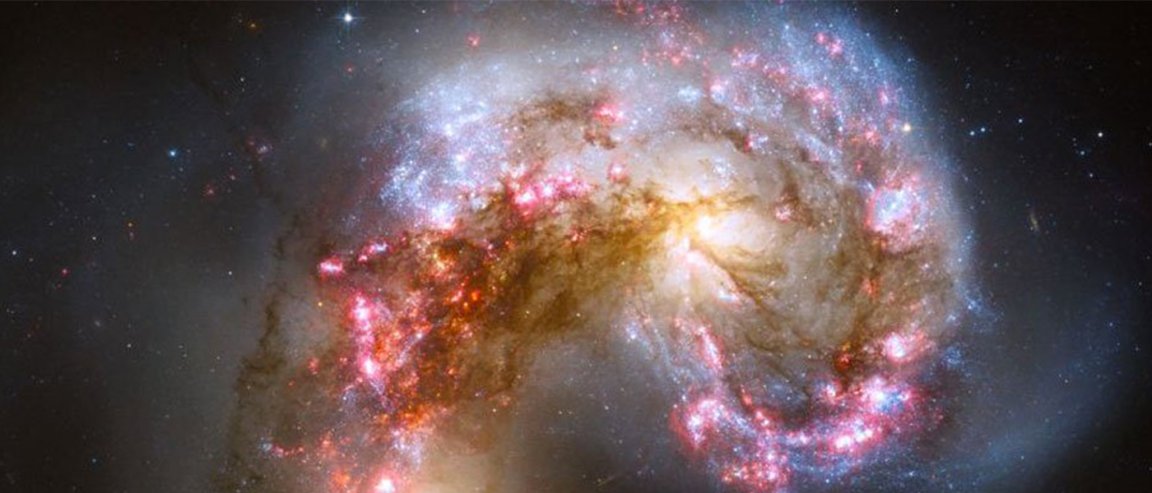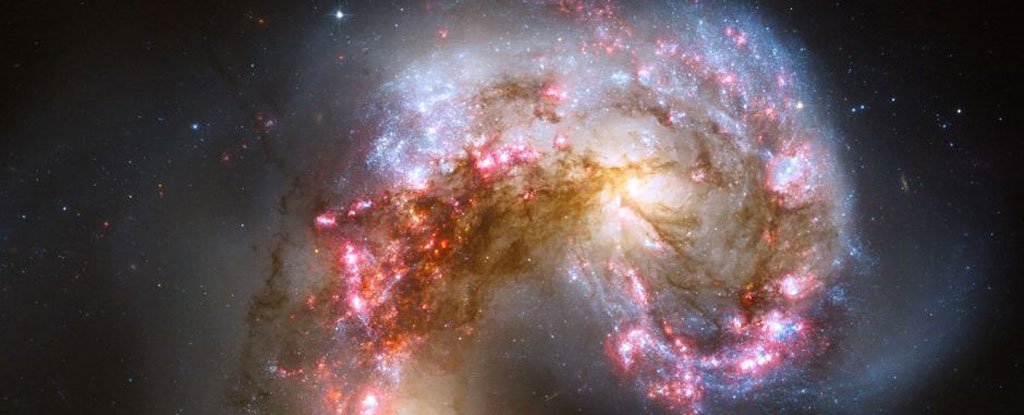
Three Makes A Black Hole
About 1.8 billion light-years away in a galaxy called IRAS 20100-4156, astrophysicists have recently discovered that a monster black hole is forming from the collision of three other spiral galaxies.
The black hole, which has been classified as supermassive, is 3.8 billion solar masses.
As a comparison, astrophysicists assert that the black hole at the center of our own galaxy has a mass that is only 4 million times that of the Sun, so a black hole that we measure in billions is a beast of truly epic proportions.

Accidental Discovery
Its discovery was, interestingly, accidental. Scientists from CSIRO were just testing their new telescope, the Australian Square Kilometre Array Pathfinder (ASKAP), when unusual readings from the aforementioned galaxy came into the picture.
Astrophysicist Lisa Harvey-Smith, who was using the telescope, was making a simple routine measurement of wave emissions from IRAS 20100-4156, and she saw that gasses within the emissions were traveling at unusually fast speeds.
The speeds, which were at about 600 km/s (372.823 mi/s), were unexpected from the galaxy, indicating that there’s a supermassive black hole forming at the center.
Harvey-Smith says, “This very fast motion of the gas tells us about how massive the black hole is. The really exciting thing about this is it is a direct measurement of the mass of the black hole by stuff that’s swirling around it.” She adds that discovery of these phenomena that occur in the universe may help in understanding how galaxies form.
It is known that whenever galaxies collide and form a supermassive black hole, stars form at an extremely high rate. This process is called a starburst.
Harvey-Smith’s team has submitted their findings for publication in the Monthly Notices of the Royal Astronomical Society.